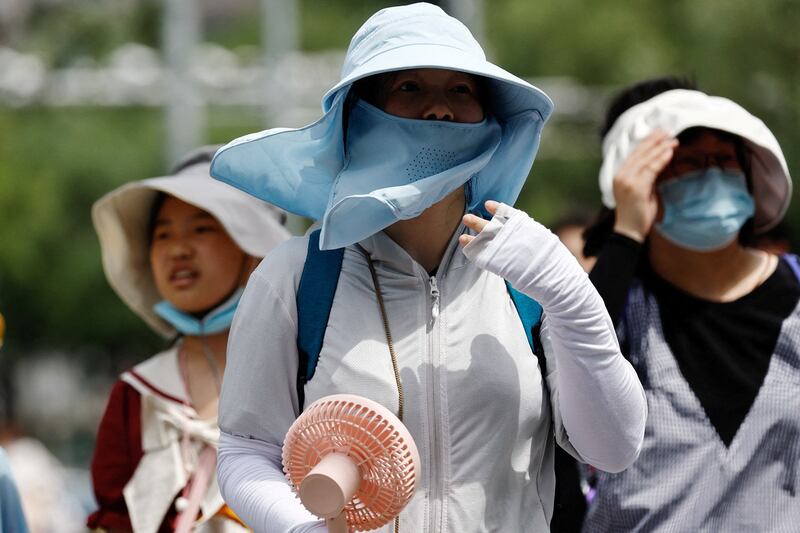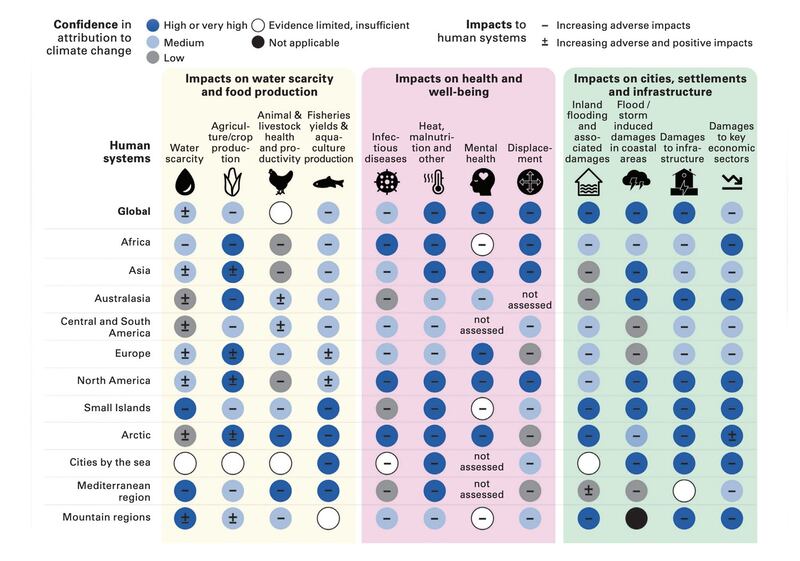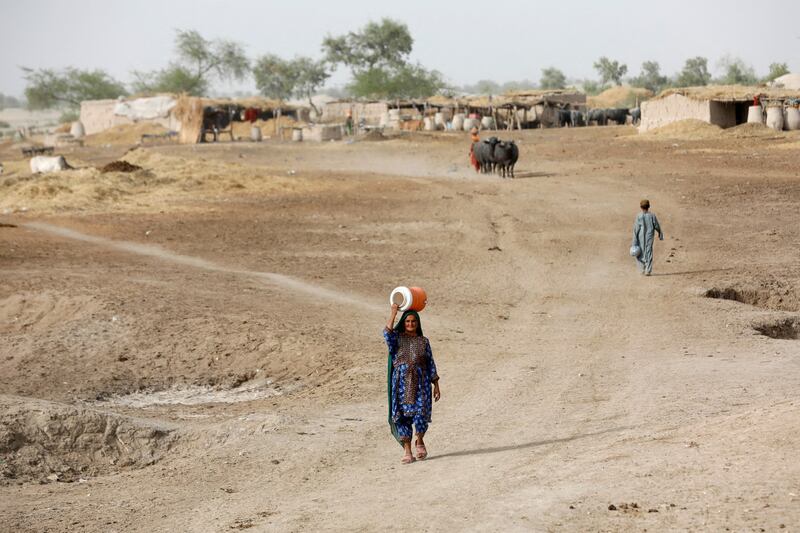Extreme heat causes the most significant mortality rate among all extreme weather events and hazards, with Asia bearing an exceptionally high burden, as the world warms faster than at any point in recorded history, U.N. agencies said in a report.
Climate change threatens to reverse decades of health and well-being progress, especially in vulnerable communities, said the joint report " State of Climate Services" by the World Meteorological Organization (WMO) and World Health Organization (WHO).
Between 2000 and 2019, estimated deaths due to heat were approximately 489,000 per year, with a particularly high burden - 45% - in Asia.
Countries with limited early warning coverage, most of which were vulnerable Asian and African nations, experience disaster mortality rates eight times higher than those with an extensive range, the report said.
Burmese construction worker Rajendra G, 40, works as a daily wage laborer at a construction site in Bangkok. During the summer, he said the workers were given breaks due to extreme heat.
“It was impossible to work outside, especially between 11 and 2. So, we started early, took a break during the day, and worked in the evening again,” Rajendra, who declined to give his family name, told Radio Free Asia. “Some of our friends fainted, but thank God, no one was seriously ill.”
Rajendra G is one of the millions, including street vendors, cleaners, farmers, and other informal economy workers, who bore the brunt of the unprecedented heatwaves, with record-setting temperatures in most of Southeast Asia, China, and other parts of Asia this summer, as the world entered what U.N. Secretary-General António Guterres called a period of “global boiling.”
Schools were shut down, and power grids struggled to cope as air conditioners were turned on full blast at homes, offices, and factories. In India, at least 170 people died, as hospitals and health systems in parts of the country, as well as in Vietnam, Laos, and Thailand, came under severe strain due to heatwave-related admissions.

The World Weather Attribution (WWA), a group of global scientists, said that the heat wave in Southeast Asia was expected “once in 200 years,” which would have been nearly unthinkable without the influence of human-induced climate change.
Scientists say the rising temperature is due to carbon dioxide emissions from burning fossil fuels and the emergence of El Niño, a climate phenomenon characterized by the periodic warming of the equatorial Pacific.
“Practically the whole planet has experienced heatwaves this year,” WMO Secretary-General Petteri Taalas said Thursday.
“The onset of El Niño in 2023 will greatly increase the likelihood of breaking temperature records further, triggering more extreme heat in many parts of the world and in the ocean – and making the challenge even greater.”
Better climate health services needed
The U.N.’s Thursday report, with input from 30 other partners, came as scientists said 2023 is most likely to be the warmest on record, as every month since June has been the hottest month for each respective month, as well as the highest daily average surface air temperature on July 6.
Heatwaves also exacerbate air pollution, which rose to the fourth leading cause of global premature deaths in 2019, responsible for around 7 million annual fatalities, surpassing well-known risk factors such as obesity, cardiovascular disease, and malnutrition.
According to Joy Shumake-Guillemot, who leads the WHO/WMO Joint Office for climate and health, heatwave mortality could be 30 times higher than recorded, with just 54% of countries in the world receiving warnings that tell them how to protect their health during a heatwave.

Changing climate conditions amplify the spread of climate-sensitive diseases, making dengue the world’s fastest-spreading vector-borne disease and increasing the length of the malaria transmission season in Asia and Africa.
The report emphasized the need for customized climate information and services to help the health sector deal with extreme weather, poor air quality, changing disease patterns, and food and water insecurity, citing limited access to scientific resources as a critical challenge.
It said about three-quarters of national weather services supply climate data to the health sector. Yet, less than a quarter of health ministries use meteorological information for climate-related health monitoring.
“The climate crisis is a health crisis, driving more severe and unpredictable weather events, fuelling disease outbreaks, and contributing to higher rates of noncommunicable diseases,” said Tedros Adhanom Ghebreyesus, WHO Director-General.
By 2030, there will be around 560 medium to large-scale disasters each year, roughly 1.5 per day, the report warned, emphasizing that nations lacking comprehensive early warning systems face an eightfold increase in disaster-related fatalities compared to those with robust coverage.

The report highlighted global case studies demonstrating the tangible benefits of combining climate and health efforts.
In Fiji, enhanced integrated risk monitoring and climate-informed early warning systems have helped people better prepare and respond to climatic changes, reducing morbidity and mortality from climate-sensitive diseases, said Shumake-Guillemot.
In Myanmar, satellites help integrate climate and environmental data into health surveillance to issue early warnings for leptospirosis, a bacterial disease common in Southeast Asia, often undiagnosed, and associated with waterborne outbreaks following heavy rainfall and floods.
The report also pointed to the development of an integrated early warning system for dengue in Vietnam of up to six months in advance, where there has been an increase of over 100% in the number of cases of dengue fever since 2000.
In Laos, efforts to bolster vulnerable settlements provided clean water, sanitation, and health infrastructure to 130,000 people, while 189 villages received climate resilience and sustainable infrastructure training, including maintenance and land use guidance.
Edited by Mike Firn and Elaine Chan.
